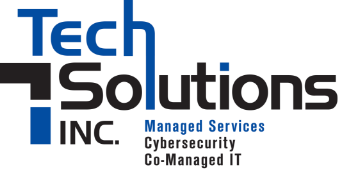A futurist might tell you that a business professional, Director of Global Sales – Jane Smith, will soon walk into her office and tell the computer to turn on. The robot assistant will bring her a fresh cup of coffee made for her arrival, and then provide her with an update on important news. She will ask for the Johnson Project files and the latest developments on the project and the sales dashboard will be displayed on to the 146” wall monitor. She will put on her augmented reality glasses that will notify and show her important emails and twitter messages as they arrive as she busies herself with other productive work. Her virtual assistant will help her join the virtual meeting with all the regional sales reps from various regions around the world. The robot that just rolled into her office will take her lunch order and then work with the refrigerator and the oven to deliver it to her desk. Sensors in her headset will feel how her stress level is increasing. The virtual assistant will process the sensor data and then help her relax a bit. While Jane is busy doing her job, all the electronic devices in her office will be recharging without actually needing to plug them in.
This is the future if you listen to the folks at this year’s Consumer Electronics Show (CES) in Las Vegas. There are lots of weird and crazy gadgets at this show every year, but as business professionals, we watch what is happening at CES for two important reasons. First, what happens in the home can eventually drift into the office as soon as it becomes practical and accepted. Second, all these advances in technology will eventually turn into implementation and security challenges for IT departments to face.
The Consumer Electronics Show featured three important ideas this year that will eventually impact the way we do business: integration of artificial intelligence with voice controlled devices, new uses of sensors that will make ordinary devices smarter, and special function robots that will make life easier.
First, the biggest news from the show was the integration of Amazon/Google digital assistants into everyday items such as glasses, cars, TVs, wrist watches, and, of course, toilets. Artificial intelligence was also added to various home appliances like coffee makers, vacuum cleaners, refrigerators, and ovens to allow them to begin anticipating common requests. The devices this year were more focused, easier to manage, and more helpful to the consumer than in past years. Coffee makers learn when you expect to make a cup of coffee, and thermostats can tell when you are home. As consumers become more and more comfortable with voice commands the trends will make their way into the office.
The second continuing trend includes integration of sensors into everyday objects. To make life even easier, product development teams are putting sensors into products for seniors, new moms, and even pets. Everyday life will be easier with wearable airbags for people prone to falling, smart breast pumps, and doors that automatically open for pets. Cars will soon be able to detect an infant left in a hot car. Also big on the list was Digital Therapeutics – where sensors and AI can help you sleep, control stress, and concentrate more effectively.
Robots have been a part of CES for years. However, this year’s third major idea revealed at the show is slightly different. In addition to the silly robot toys for your cat to play with, robots are developing into specialized service providers. Robots that help around the house by interacting with your appliances, serving drinks, hauling groceries, etc. The most compelling immediate use is that hotels and airports will begin deploying them soon to help improve customer service. Imagine a robot on each hotel floor to quickly perform tasks such as room service delivery, tray pickup, and forgotten toothbrush delivery.
Additional notable advancements include:
- What will your conference room begin to look like next? TV’s keep getting bigger … Samsung introduced a micro OLED display that is 146” or about the size of a wall.
- Phillips introduced a TV that rolls up (really it rolls down). The 65” monitor can neatly roll down for travelling or to hide from view when guests are present.
- Wireless Charging is the concept of over-the-air charging of a device without the need for a plug or a mat. One company even introduced wireless charging for vehicles during this year’s show.
- A smart toilet that accepts voice activated commands and includes AI to keep itself clean and fresh.
Your IT team should understand how innovation works and help you get ready. Some of these concepts will begin to appear in the office environment sooner or later. Business IT departments must prepare for a changing world. It will be their role to worry about data security, device reliability and technical support for these new gadgets as they enter the work place. But for now, it’s just fun to think about the future.
